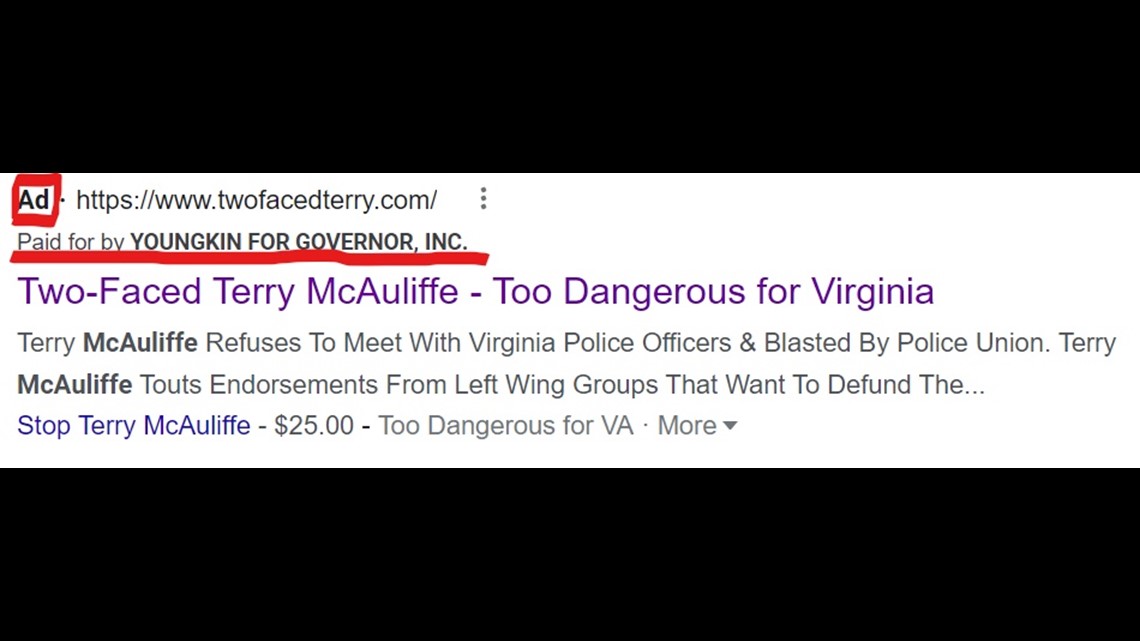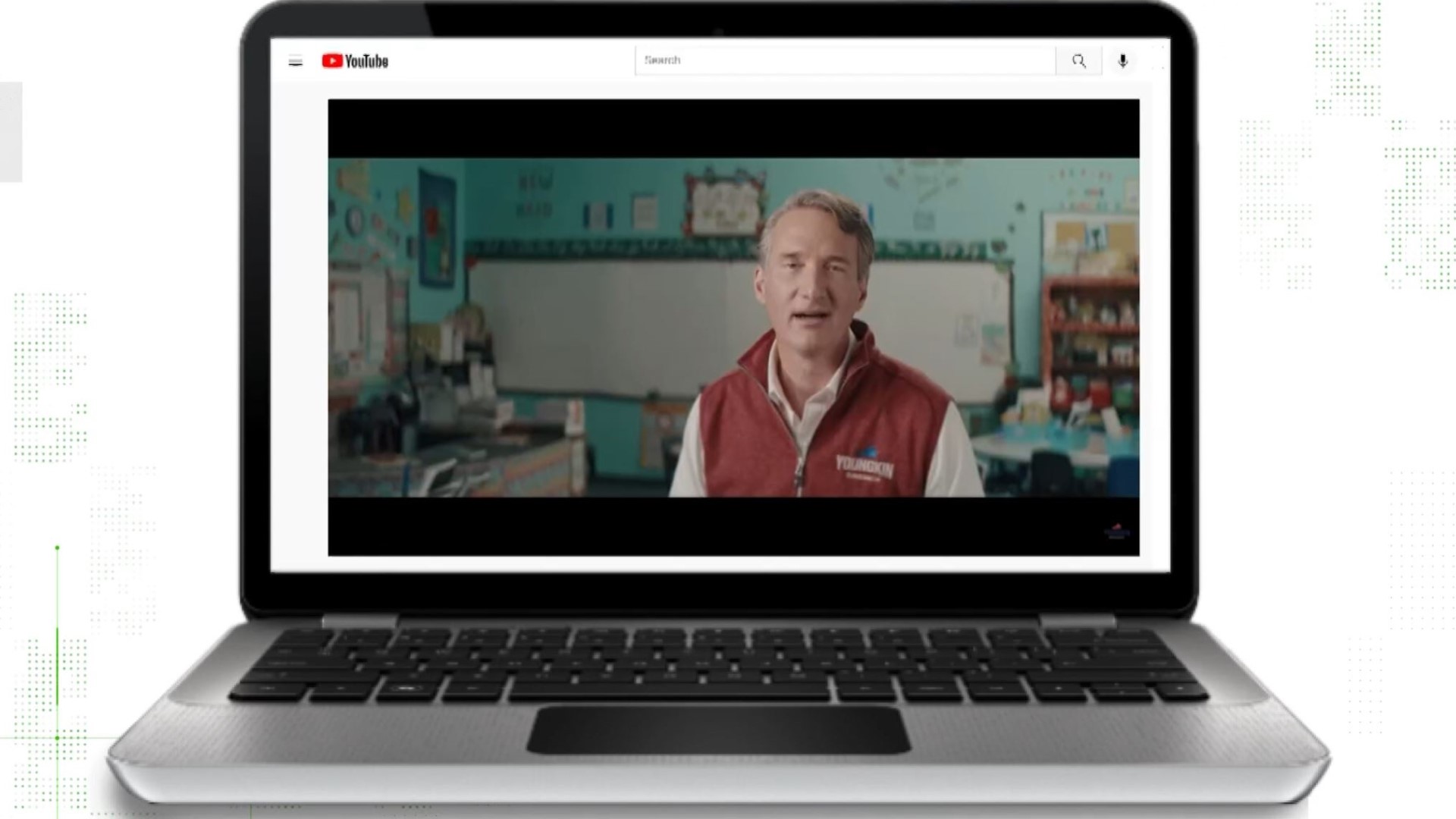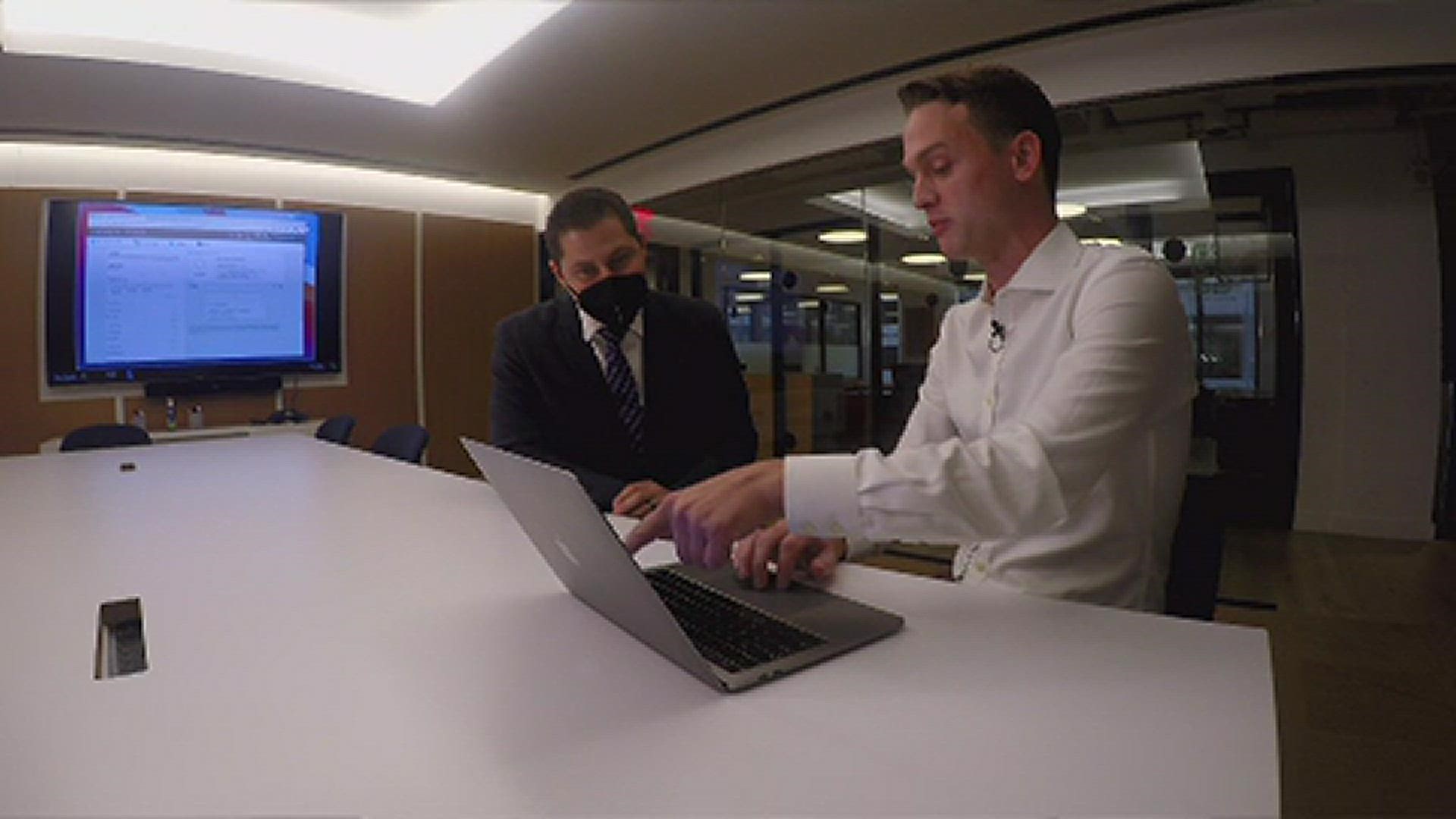WASHINGTON — Political campaigns across the country are spending millions of dollars on Google Ads in an effort to create a positive narrative. In Virginia, both gubernatorial candidates have used the tactic, pouring millions of dollars into the resource.
To better understand how this all works, our Verify team talked to a digital marketing company, which took us step-by-step through the process.
THE QUESTIONS
Can political candidates use Google Ads to change headlines?
THE SOURCES
- David Bosley, CMO and co-founder at PBJ Marketing
- Google Transparency Report, "Political Advertising in the United States"
- Spokesperson for Terry McAuliffe, Democrat candidate for governor
WHAT WE FOUND
With less than two weeks to go before election day in Virginia, the airwaves have become inundated with campaign ads. Both candidates have spent large sums of money to push their message on TV and radio.
One other type of advertising, getting less attention, is the use of Google Ads. This effort has attracted millions of dollars of spending from the two Virginia front-runners.
According to Google's Transparency Report, the McAuliffe campaign, "Terry For Virginia" has spent over $3.7 million on Google ads, including advertisements on YouTube, which is owned by Google.
The same report shows the Youngkin campaign, "Youngkin For Governor Inc" has spent over $950,000 on Google Ads, including those on Youtube.
Both campaigns are using creative techniques to create a positive narrative, by designing headlines that are favorable to themselves, and critical of their opponent.
For example, consider the following ad from McAuliffe, which was online for 18 days, starting Oct. 5, according to Google's Transparency Report.

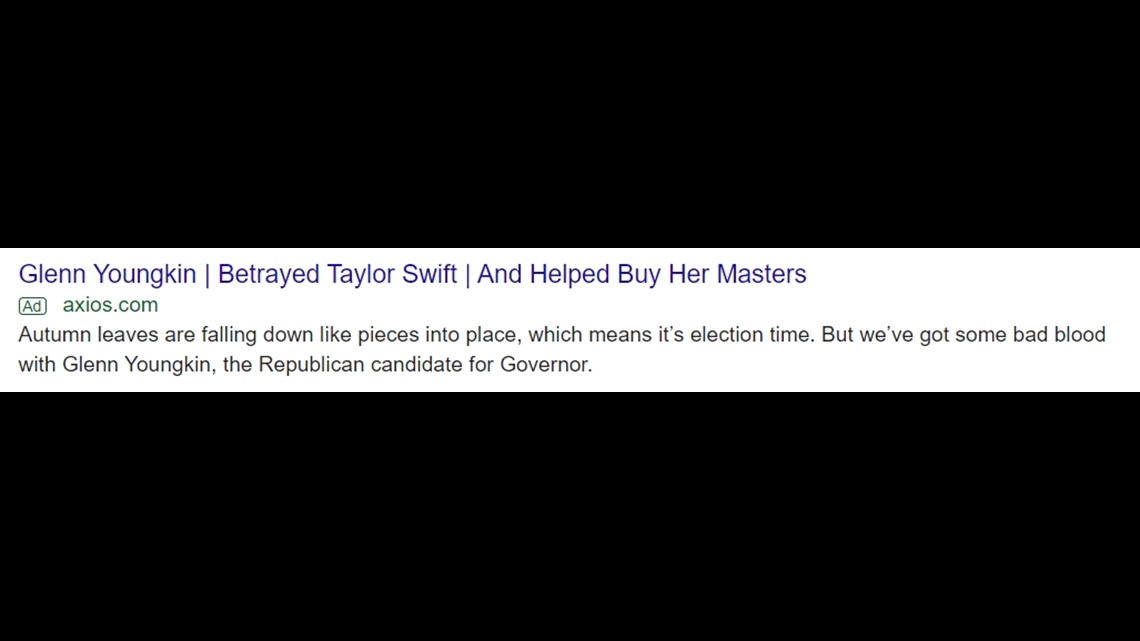
The ad linked to an Axios article, which discussed the role Taylor Swift has played in the campaign, but showed the headline, "Glenn Youngkin | Betrayed Taylor Swift | And helped buy her masters.
The Axios article itself was published with a different Google headline: "Virginia Governor's race features Taylor Swift."

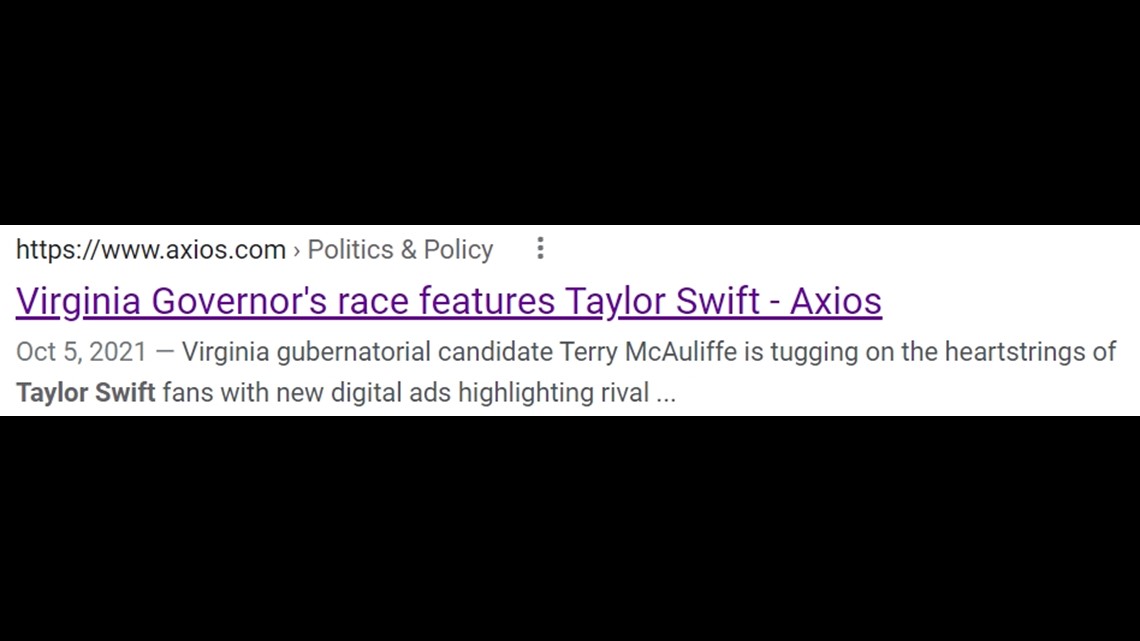
A spokesperson for the McAuliffe campaign offered the following statement, in regards to their Google Ad strategy:
"Glenn Youngkin is running on prioritizing Donald Trump’s conspiracy theories instead of Virginians, and our campaign is making sure we reach voters where they are at. There is a lot on the line in this election... and there is only one candidate running to protect women ‘s reproductive rights, keep our economy strong, and create a world-class education.”
The Youngkin campaign has used Google Ads as well. As of Oct. 25, a google search of "McAuliffe" brings up the following ad as the first result:

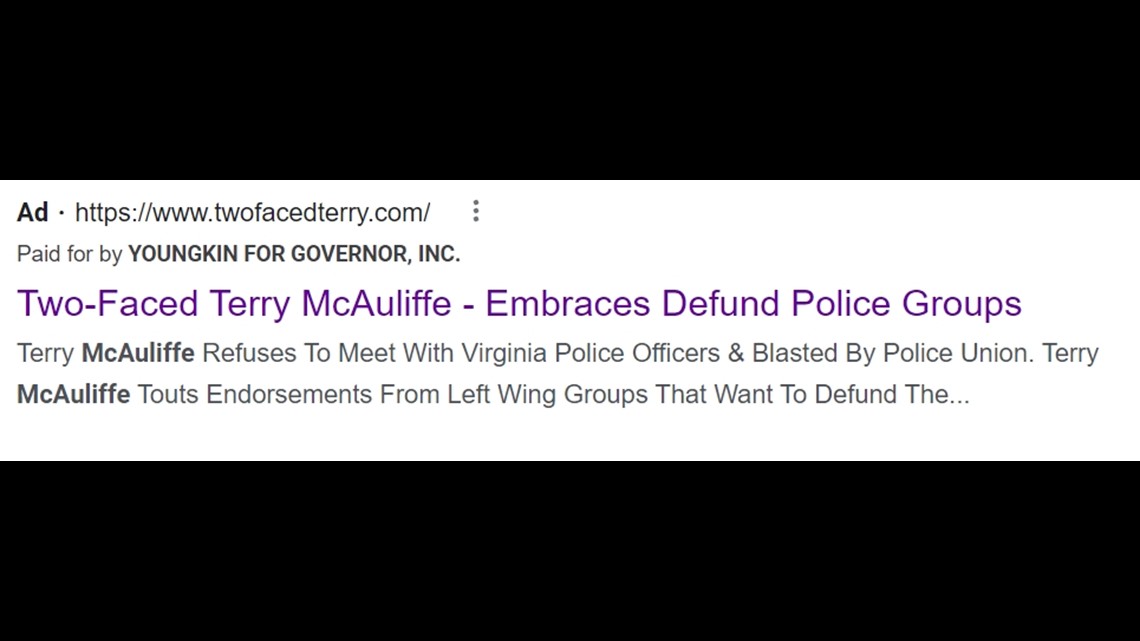
This ad links to a website titled twofacedterry.com, which offers further criticism of the Democrat candidate for governor.
A spokesperson for the Youngkin campaign declined to comment on their Google Ad strategy.
The use of these Google ads is not specific to the Virginia gubernatorial race. Since May 31, 2018, nearly $800 million has been spent on political Google ads, according to Google's Transparency Report.
The report showed that the biggest spenders were as follows:
- "Biden For President" - $83,733,500
- "Donald J. Trump For President, INC" - $83,483,000
- "Mike Bloomberg 2020 INC" - $62,250,100
- "Trump Make American Great Again Committee" - $47,351,500
- "DSCC" - $16,349,300
HOW THESE ADS ARE MADE?
Political campaigns have bet big on these Google Ads. To find out how they are crafted, the Verify team visited PBJ Marketing, and spoke with CMO and Co-Founder David Bosley.
Bosley said that the first step is to select the keyword, which is the term that people will be searching on Google.
"If it's a keyword that no one bids on, it might cost 50 cents or $1," he said.
It's another story for a more coveted search term like a candidate name. Campaigns can spend thousands of dollars on these search terms, and they are bidding against each other for clicks.
"If this was 'Terry McAuliffe' or 'Glenn Youngkin' yes there's a lot of money attached to those search terms," Bosley said.
As a demo, Bosley created a sample Google Ad, linking to the bio page for reporter Evan Koslof, which would pop up when keyword "Evan Koslof" is searched. Watch the process below.
Bosley was able to choose the Google headline word-for-word. He said that this could allow candidates to set the narrative, whether that was by writing "Terrible Reporter", "Great Reporter", or something totally irrelevant like "Best Hamburgers in DC."
The process was quick and easy, although Bosley said that there is a delay between crafting the ad and final publishing. He said ads must be approved by Google first.
The tactic used by the McAuliffe campaign, linking to a well-known media outlet with a changed Google headline, has received some criticism. Ericka Menchen-Revino, a professor of communications at American University said that it is perfectly legal, but it could be considered misleading.
"It looks like it's intended to give the credibility," she said. "Pair the credibility of the news organization's name with the message that the campaign wants to send. And to me, that's misleading."
HOW TO SPOT AN AD?
There are two really easy ways to spot a political ad on Google.
- Look for bolded "Ad" disclaimer on the top left corner of the Google post.
- All political ads must list who paid for the ad, directly below the link

